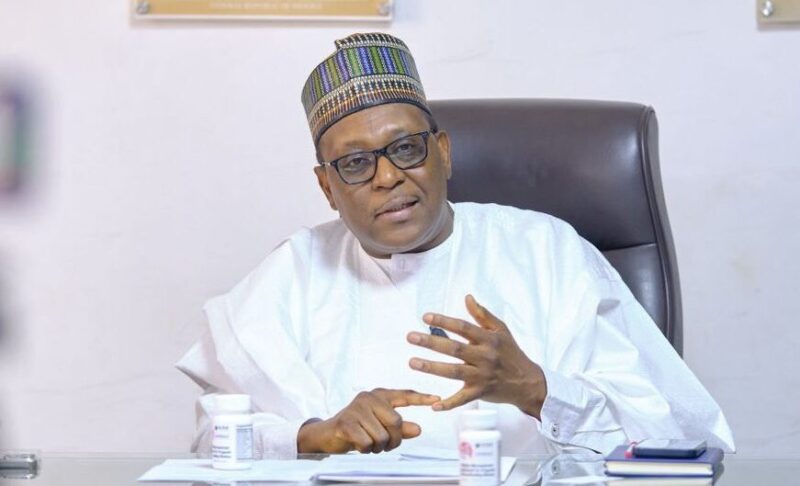The federal government, state authorities and development partners have endorsed a new set of reforms aimed at strengthening accountability, improving financing, and expanding primary healthcare access and health delivery across the country.
This was announced in a communiqué issued on Friday, and signed by the Federal Ministry of Health and Social Welfare, following the conclusion of the 2025 Health Sector–Wide Joint Annual Review held in Abuja.
The three-day annual forum which ran from 12-14 November marked the strongest demonstration yet of Nigeria’s attempt to consolidate its Sector-Wide Approach (SWAp) anchored on “One Plan, One Budget, One Report, One Conversation.”
The review is aimed at evaluating the performance of the health sector and guide planning, budgeting and coordination. It assessed progress under the Nigeria Health Sector Renewal Investment Initiative (NHSRII) and examined how both federal and state systems are performing on the path toward achieving Universal Health Coverage (UHC).
Accountability framework on Compact expansion
One of the major outcomes was the official signing of the UHC Compact Addendum, which expands the existing Compact to include the private sector actors, traditional institutions and other ministries.
According to the communiqué, the addendum integrates emerging health sector priorities; responding to global health financing shifts; and strengthening accountability through clearer ‘Ask-and-Offer’ frameworks.
Despite this progress, the review noted that operationalisation remains uneven, with fewer than half of states running functional coordination platforms and wide variations in alignment to the One Plan/One Budget system.
Maternal and neonatal mortality
Presentations during the JAR highlighted early gains recorded under the Maternal and Newborn Mortality Reduction Innovation and Initiatives (MAMII), with up to 17 per cent reduction in maternal mortality in early-implementing LGAs and improving trends in neonatal mortality across participating states.
The communique indicated that the gains are supported by rising Antenatal care coverage and improved referral pathways.
However, the assessment exposed persistent gaps with only 32 per cent of emergency obstetric and newborn care (CEmONC) accessed facilities meeting minimum readiness criteria, and widespread shortages of blood continue to undermine emergency response capacity in several states.
Challenges undermining PHC’s functionality
The communiqué highlights improvements in primary healthcare functionality, including better 24-hour service availability, electricity reliability, and WASH standards across several zones.
Still, critical weaknesses persist. Staffing deficits remain particularly acute in rural LGAs, and commodity stockouts continue to erode service quality despite expanded investments in PHC revitalisation and referral systems.
A major concern raised at the meeting is the sector’s mounting financial vulnerability.
While domestic financing through the Basic Health Care Provision Fund (BHCPF) and state health insurance schemes has expanded, with over 2.4 million vulnerable Nigerians enrolled, the review warns of rising risks due to declining external funding and delayed budget releases.
Vaccine financing discussions also revealed the need for predictable government counterpart contributions and improved budget execution at federal and state levels.
Launch of several digital tools
At the high level meeting, the federal government launched major national data products. They include: Data Plans, Tools & Reports to strengthen data quality, visibility and coordination; National CEmONC Facility Readiness Assessment Report, providing Nigeria’s most comprehensive evaluation of emergency obstetric and newborn capacity; and Climate & Health National Adaptation Plan, advancing resilience against climate-driven health risks.
Others are Second National Action Plan for Health Security (NAPHS-2), strengthening outbreak preparedness and response; N-CAS Strategy, integrating campaigns under “One Plan, One Campaign, One Frontline”; and the Mini-DHS Framework, enabling annual, high-fidelity outcome measurement to track progress toward NHSRII goals.
These tools, the communiqué states, is a form of an integrated ecosystem that improves their planning, the allocation of resources, measures performance and ultimately the results delivery for Nigerians.
Local manufacturing
The review reported progress under the Presidential Value Chain Initiative, with new MOUs signed with local manufacturers and over 40 private-sector entities engaged in expanding pharmaceutical and diagnostics production of syringes, PPE and other selected commodities.
However, sustained industrial policy, regulatory clarity and guaranteed demand mechanisms are needed to transition at least 20 priority commodities to local production by 2026.
The communiqué also cited corruption and persistent issues in BHCPF which includes ghost workers, irregular payments, double expenditures and weak fiscal tracking and called for stronger digital financial systems and routine audits.
To address these gaps, resolutions include adopting biometric verification across all PHCs and health insurance platforms, and rolling out digital expenditure tracking to all BHCPF-supported facilities by Q3 2026.
On Sexual & Reproductive Health Services (SRHS), the communique stated that progress in SRHS is evident with availability of enabling policies and state-owned implementation platforms.
However, facility readiness remains a critical bottleneck with 30 per cent of BHCPF facilities currently providing the complete suite of SRHS while 86 per cent of the assessed population continues to face access barriers.
READ ALSO: FG reaffirms commitment to health reforms, admits persistent system weaknesses
Resolutions
In line with international commitments on donor coordination and the shift to supporting government priorities, the meeting resolved to strengthen stakeholder coordination for improved health service delivery, ensuring alignment with the commitments outlined in the Compact.
The meeting agreed on several priority actions for 2026, including: operationalising the UHC compact addendum by Q1 2026 with clear deliverables; biometric verification for PHC workers and insurance beneficiaries to eliminate ghost workers; strengthening integrity systems through digital expenditure tracking across BHCPF facilities; and establishing a National Human Resources for Health (HRH) programme and exploring new cadres of the future workforce.
Others are improving data quality and use for action; scaling MAMII nationally, closing financing gaps and strengthening emergency referral pathways; expanding health insurance to enrol five million Nigerians, including one million vulnerable people by end-2026; operationalising medipool and increasing local production of priority health commodities; and strengthening DRF accountability and real-time PHC financial management systems.
In addition, ensuring full state and LGA alignment with NHSRII priorities, especially for CEmONC readiness and emergency response; and improving access to and quality of SRHS through policy domestication, sustainable financing.
The communiqué reaffirmed Nigeria’s commitment to fulfilling its vaccine financing obligations, strengthening state and LGA-level performance management, and expanding stakeholders collaboration as part of gaining mutual accountability and transparency from portfolio review.









